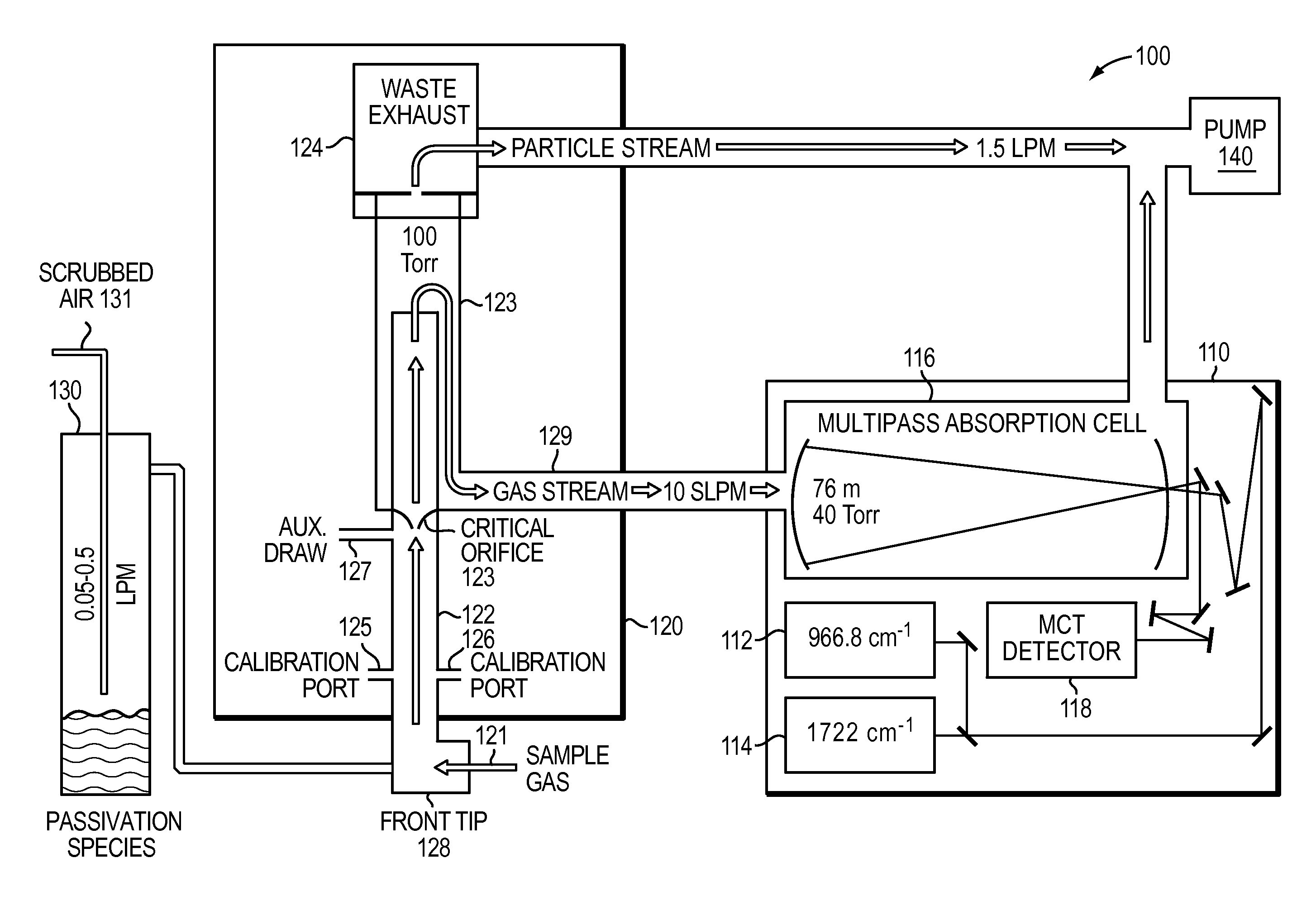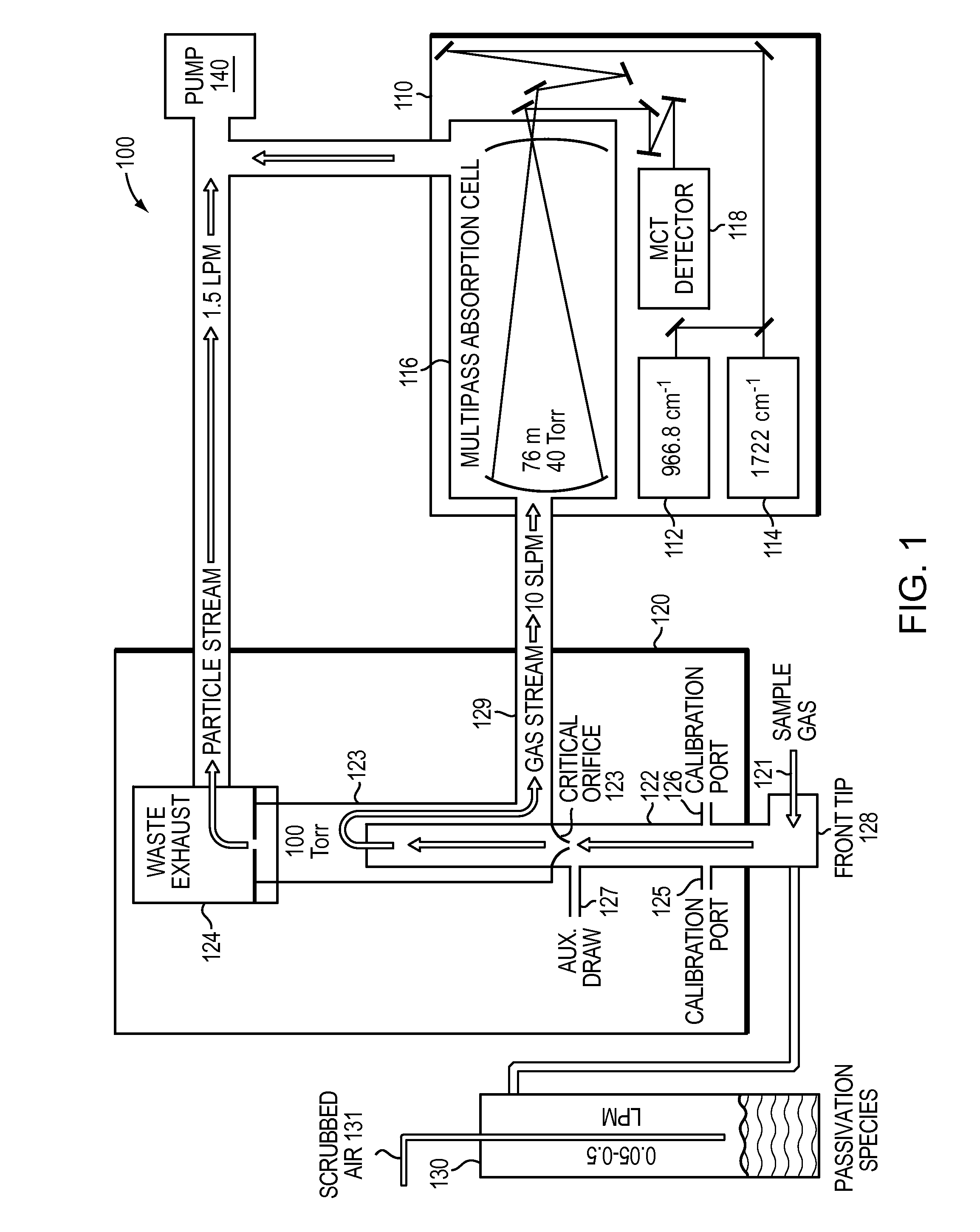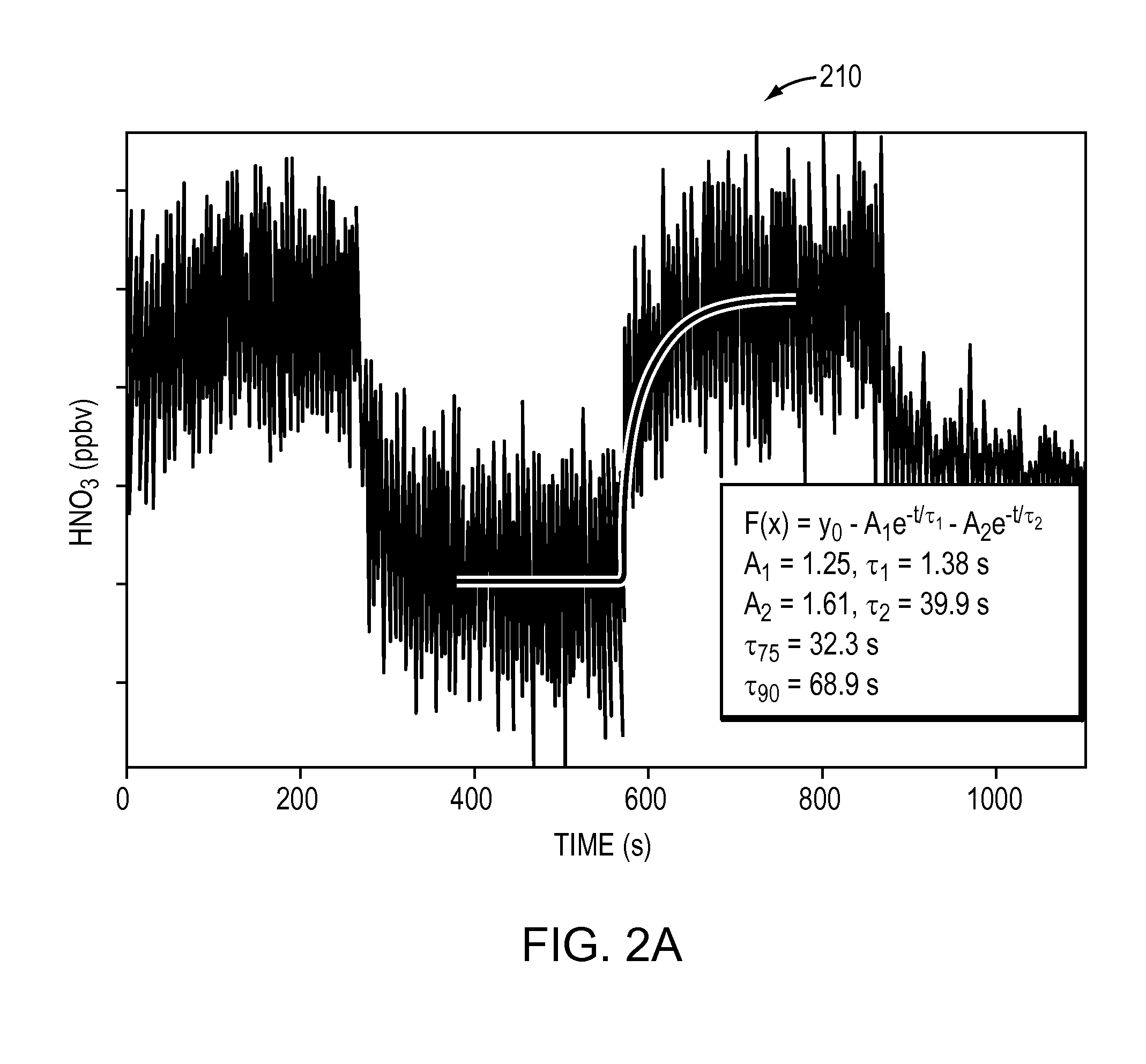Techniques for active passivation
a technology of active passivation and passivation ring, which is applied in the direction of optical radiation measurement, instruments, spectrometry/spectrophotometry/monochromators, etc., can solve the problems of difficult detection on timescales, affecting the response time of instruments, and affecting the detection accuracy of polar molecules, so as to prevent further binding of polar molecules
- Summary
- Abstract
- Description
- Claims
- Application Information
AI Technical Summary
Benefits of technology
Problems solved by technology
Method used
Image
Examples
example results
[0038
[0039]Application of a passivation species (either continuous or intermittent) may significantly improve response time of an output signal produced by a detector (e.g., MCT detector 118) to rapid changes in concentration. For example, in some cases, application of a passivation agent may decrease response time by more than a factor of 30 over operation without a passivation species.
[0040]FIG. 2A shows a graph 210 of typical HNO3 response time using the example instrument 100 of FIG. 1, absent a passivation agent. The rise and fall times of HNO3 may be best described by a double exponential in the form of F(x)=y0−A1e−t / τ1A2e−t / τ2, with τ1=1.38 s and τ2=39.9 s, and A1 / A2=0.78. The time required for the signal to achieve 75% and 90% of its final value after injection or removal of HNO3 may be 32.3 second (s) and 68.9 s, respectively (such that τ75=32.3 s and τ90=68.9 s). Thus, the example instrument 100, absent application of a passivation species may be capable of seeing HNO3 sig...
PUM
 Login to View More
Login to View More Abstract
Description
Claims
Application Information
 Login to View More
Login to View More - R&D
- Intellectual Property
- Life Sciences
- Materials
- Tech Scout
- Unparalleled Data Quality
- Higher Quality Content
- 60% Fewer Hallucinations
Browse by: Latest US Patents, China's latest patents, Technical Efficacy Thesaurus, Application Domain, Technology Topic, Popular Technical Reports.
© 2025 PatSnap. All rights reserved.Legal|Privacy policy|Modern Slavery Act Transparency Statement|Sitemap|About US| Contact US: help@patsnap.com



